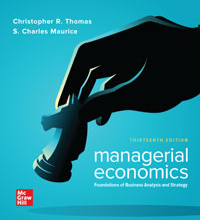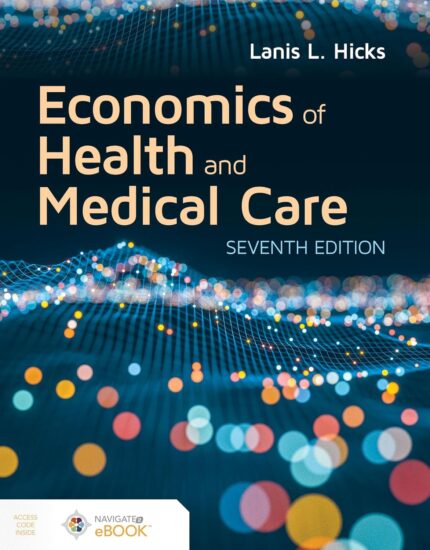Managerial Economics International Edition 3rd Edition by Luke M. Froeb – Test Bank
CHAPTER 3
- You and two partners start a company. However, your partners play no role in running the company. You devote all our time and talent to run your own business rather than working for someone else. You incur an(a):
- explicit cost.
- marginal cost.
- sunk cost
- opportunity cost.
ANS: D
- A business owner makes 1000 items a day. Each day he/she contributes 8 hours to produce those items. If hired, elsewhere he/she could have earned $250 an hour. The item sells for $15 each. Production does not stop during weekends. If the explicit costs total $150,000 for 30 days, the firm’s accounting profit for the month equals:
- $300,000
- $60,000
- $450,000
- $240,000
ANS: A
- A business owner makes 1000 items a day. Each day he/she contributes 8 hours to produce those items. If hired, elsewhere he/she could have earned $250 an hour. The item sells for $15 each. Production does not stop during weekends. If the explicit costs total $150,000 for 30 days, the economic profit for the month equals:
- $300,000
- $60,000
- $450,000
- $240,000
ANS: D
- The opportunity cost of an action:
- is equal to the marginal cost of an action
- is equal to explicit cost
- is equal to the next best alternative forgone
- is the total cost of an action
ANS: C
- Economists argue that:
-
- accounting costs consider all types of costs including implicit costs
- there is an opportunity cost associated with all decisions.
- economic decisions do not have opportunity costs but other decisions do.
- economic decisions should consider sunk costs
ANS: B
- James used $250,000 from his savings account that paid an annual interest of 15% to purchase a hardware store. After one year, James sold the business for 320,000. His accountant calculated his profit to be:
- $320,000
- $70,000
- $282,500
- $32,500
ANS: B
- James used $250,000 from his savings account that paid an annual interest of 15% to purchase a hardware store. After one year, James sold the business for 320,000. An economist calculated his profit to be:
- $320,000
- $70,000
- $282,500
- $32,500
ANS: D
- Variable costs are
- costs that vary with output
- equal marginal costs
- not considered in decision-making
- equal to total costs
ANS: A













Reviews
There are no reviews yet.